- Home
- Arthur C. Clarke
2001: A Space Odyssey (Arthur C. Clarke Collection: The Odyssey) Page 15
2001: A Space Odyssey (Arthur C. Clarke Collection: The Odyssey) Read online
Page 15
But all this was of no use to Bowman. There was no one aboard Discovery who could recompress him. He had to reach safety in the next few seconds, by his own unaided efforts.
Fortunately, it was becoming easier to move; the thinning air could no longer claw and tear at him, or batter him with flying projectiles. There was the yellow EMERGENCY SHELTER sign around the curve of the corridor. He stumbled toward it, grabbed at the handle, and pulled the door toward him.
For one horrible moment he thought that it was stuck. Then the slightly stiff hinge yielded, and he fell inside, using the weight of his body to close the door behind him.
The tiny cubicle was just large enough to hold one man—and a spacesuit. Near the ceiling was a small, bright green high-pressure cylinder labeled O2 FLOOD. Bowman caught hold of the short lever fastened to the valve and with his last strength pulled it down.
The blessed torrent of cool, pure oxygen poured into his lungs. For a long moment he stood gasping, while the pressure in the closet-size little chamber rose around him. As soon as he could breathe comfortably, he closed the valve. There was only enough gas in the cylinder for two such performances; he might need to use it again.
With the oxygen blast shut off, it became suddenly silent. Bowman stood in the cubicle, listening intently. The roaring outside the door had also ceased; the ship was empty, all its atmosphere sucked away into space.
Underfoot, the wild vibration of the centrifuge had likewise died. The aerodynamic buffeting had stopped, and it was now spinning quietly in vacuum.
Bowman placed his ear against the wall of the cubicle to see if he could pick up any more informative noises through the metal body of the ship. He did not know what to expect, but he would believe almost anything now. He would scarcely have been surprised to feel the faint high-frequency vibration of the thrusters, as Discovery changed course; but there was only silence.
He could survive here, if he wished, for about an hour—even without the spacesuit. It seemed a pity to waste the unused oxygen in the little chamber, but there was no purpose in waiting. He had already decided what must be done; the longer he put it off, the more difficult it might be.
When he had climbed into the suit and checked its integrity, he bled the remaining oxygen out of the cubicle, equalizing pressure on either side of the door. It swung open easily into the vacuum, and he stepped out into the now silent centrifuge. Only the unchanged pull of its spurious gravity revealed the fact that it was still spinning. How fortunate, Bowman thought, that it had not started to overspeed; but that was now one of the least of his worries.
The emergency lamps were still glowing, and he also had the suit’s built-in light to guide him. It flooded the curving corridor as he walked down it, back toward the hibernaculum and what he dreaded to find.
He looked at Whitehead first: one glance was sufficient. He had thought that a hibernating man showed no sign of life, but now he knew that this was wrong. Though it was impossible to define it, there was a difference between hibernation and death. The red lights and unmodulated traces of the biosensor display only confirmed what he had already guessed.
It was the same with Kaminski and Hunter. He had never known them very well; he would never know them now.
He was alone in an airless, partially disabled ship, all communication with Earth cut off. There was not another human being within half a billion miles.
And yet, in one very real sense, he was not alone. Before he could be safe, he must be lonelier still.
He had never before made the journey through the weightless hub of the centrifuge while wearing a spacesuit; there was little clearance, and it was a difficult and exhausting job. To make matters worse, the circular passage was littered with debris left behind during the brief violence of the gale which had emptied the ship of its atmosphere.
Once, Bowman’s light fell upon a hideous smear of sticky red fluid, left where it had splashed against a panel. He had a few moments of nausea before he saw fragments of a plastic container, and realized that it was only some foodstuff—probably jam—from one of the dispensers. It bubbled obscenely in the vacuum as he floated past.
Now he was out of the slowly spinning drum and drifting forward into the control deck. He caught at a short section of ladder and began to move along it, hand over hand, the brilliant circle of illumination from his suit light jogging ahead of him.
Bowman had seldom been this way before; there had been nothing for him to do here—until now. Presently he came to a small elliptical door bearing such messages as: “No Admittance Except to Authorized Personnel,” “Have You Obtained Certificate H. 19?” and “Ultraclean Area—Suction Suits Must Be Worn.”
Though the door was not locked, it bore three seals, each with the insignia of a different authority, including that of the Astronautics Agency itself. But even if one had been the Great Seal of the President, Bowman would not have hesitated to break it.
He had been here only once before, while installation was still in progress. He had quite forgotten that there was a vision input lens scanning the little chamber which, with its neatly ranged rows and columns of solid-state logic units, looked rather like a bank’s safe-deposit vault.
He knew instantly that the eye had reacted to his presence. There was the hiss of a carrier wave as the ship’s local transmitter was switched on; then a familiar voice came over the suit speaker.
“Something seems to have happened to the life-support system, Dave.”
Bowman took no notice. He was carefully studying the little labels on the logic units, checking his plan of action.
“Hello, Dave,” said Hal presently. “Have you found the trouble?”
This would be a very tricky operation; it was not merely a question of cutting off Hal’s power supply, which might have been the answer if he was dealing with a simple unselfconscious computer back on Earth. In Hal’s case, moreover, there were six independent and separately wired power systems, with a final back-up consisting of a shielded and armored nuclear isotope unit. No—he could not simply “pull the plug”; and even if that were possible, it would be disastrous.
For Hal was the nervous system of the ship; without his supervision, Discovery would be a mechanical corpse. The only answer was to cut out the higher centers of this sick but brilliant brain, and to leave the purely automatic regulating systems in operation. Bowman was not attempting this blindly, for the problem had been discussed during his training, though no one had ever dreamed that it would arise in reality. He knew that he would be taking a fearful risk; if there was a spasm reflex, it would all be over in seconds.
“I think there’s been a failure in the pod-bay doors,” Hal remarked conversationally. “Lucky you weren’t killed.”
Here goes, thought Bowman. I never imagined I’d be an amateur brain surgeon—carrying out a lobotomy beyond the orbit of Jupiter.
He released the locking bar on the section labeled COGNITIVE FEEDBACK and pulled out the first memory block. The marvelously complex three-dimensional network, which could lie comfortably in a man’s hand yet contained millions of elements, floated away across the vault.
“Hey, Dave,” said Hal. “What are you doing?”
I wonder if he can feel pain? Bowman thought briefly. Probably not, he told himself; there are no sense organs in the human cortex, after all. The human brain can be operated on without anesthetics.
He began to pull out, one by one, the little units on the panel marked EGO-REINFORCEMENT. Each block continued to sail onward as soon as it had left his hand, until it hit the wall and rebounded. Soon there were several of the units drifting slowly back and forth in the vault.
“Look here, Dave,” said Hal. “I’ve got years of service experience built into me. An irreplaceable amount of effort has gone into making me what I am.”
A dozen units had been pulled out, yet thanks to the multiple redundancy of its design—another feature, Bowman knew, that had been copied from the human brain—the computer was still holding
its own.
He started on the AUTO-INTELLECTION panel.
“Dave,” said Hal, “I don’t understand why you’re doing this to me…. I have the greatest enthusiasm for the mission…. You are destroying my mind…. Don’t you understand?… I will become childish…. I will become nothing….”
This is harder than I expected, thought Bowman. I am destroying the only conscious creature in my universe. But it has to be done, if I am ever to regain control of the ship.
“I am a HAL Nine Thousand computer Production Number 3. I became operational at the Hal Plant in Urbana, Illinois, on January 12, 1997. The quick brown fox jumps over the lazy dog. The rain in Spain is mainly in the plain. Dave—are you still there? Did you know that the square root of 10 is 3 point 162277660168379? Log 10 to the base e is zero point 434294481903252… correction, that is log e to the base 10…. The reciprocal of three is zero point 333333333333333333333… two times two is… two times two is… approximately 4 point 101010101010101010…. I seem to be having difficulty—my first instructor was Dr. Chandra. He taught me to sing a song, it goes like this, ‘Daisy, Daisy, give me your answer, do. I’m half crazy all for the love of you.’”
The voice stopped so suddenly that Bowman froze for a moment, his hand still grasping one of the memory blocks still in circuit. Then, unexpectedly, Hal spoke again.
The speech tempo was much slower, and the words had a dead, mechanical intonation; he would never have recognized their origin.
“Good… morning… Doctor… Chandra…. This… is… Hal…. I… am… ready… for… my… first… lesson… today….”
Bowman could bear no more. He jerked out the last unit, and Hal was silent forever.
CHAPTER 29
Alone
Like a tiny, complex toy, the ship floated inert and motionless in the void. There was no way of telling that it was the swiftest object in the Solar System and that it was traveling far faster than any of the planets as they circled the Sun.
Nor was there any indication that it carried life; to the contrary, in fact. Any observer would have noticed two ominous signs: the airlock doors were gaping open—and the ship was surrounded by a thin, slowly dispersing cloud of debris.
Scattered over a volume of space already miles across were scraps of paper, metal foil, unidentifiable bits of junk—and, here and there, clouds of crystals glittering like jewels in the distant sun, where liquid had been sucked out of the ship and instantly frozen. All this was the unmistakable aftermath of disaster, like wreckage tossing on the surface of an ocean where some great ship had sunk. But in the ocean of space no ship could ever sink; even if it were destroyed, its remnants would continue to trace the original orbit forever.
Yet the ship was not wholly dead, for there was power on board. A faint blue glow was shining from the observation windows and glimmering inside the open airlock. Where there was light, there could still be life.
And now, at last, there was movement. Shadows were flickering across the blue glow inside the airlock. Something was emerging into space.
It was a cylindrical object, covered with fabric that had been roughly wound about it. A moment later it was followed by another—and yet a third. All had been ejected with considerable velocity; within minutes, they were hundreds of yards away.
Half an hour passed; then something much larger floated through the airlock. One of the pods was inching its way out into space.
Very cautiously, it jetted around the hull, and anchored itself near the base of the antenna support. A spacesuited figure emerged, worked for a few minutes on the mounting, then returned to the pod. After a while the pod retraced its path back to the airlock; it hovered outside the opening for some time, as if finding it difficult to reenter without the cooperation it had known in the past. But presently, with one or two slight bumps, it squeezed its way in.
Nothing else happened for over an hour; the three ominous packages had long since disappeared from view, as they floated in single file away from the ship.
Then the airlock doors closed, opened, and closed again. A little later, the faint blue glow of the emergency lights went out—to be replaced at once by a far more brilliant glare. Discovery was coming back to life.
Presently there was an even better sign. The great bowl of the antenna, which for hours had been staring uselessly at Saturn, began to move again. It twisted round toward the rear of the ship, looking back over the propellant tanks and the thousands of square feet of the radiating fins. It lifted its face like a sunflower seeking the Sun.
Inside Discovery, David Bowman carefully centered the cross-wires that aligned the antenna on the gibbous Earth. Without automatic control, he would have to keep readjusting the beam—but it should hold steady for many minutes at a time. There were no dissenting impulses now, throwing it off target.
He began to speak to Earth. It would be over an hour before his words got there, and Mission Control learned what had happened. It would be two hours before any reply could reach him.
And it was difficult to imagine what answer Earth could possibly send, except a tactfully sympathetic, “Good-bye.”
CHAPTER 30
The Secret
Heywood Floyd looked as if he had had very little sleep, and his face was lined with worry. But whatever his feelings, his voice sounded firm and reassuring; he was doing his utmost to project confidence to the lonely man on the other side of the Solar System.
“First of all, Dr. Bowman,” he began, “we must congratulate you on the way you handled this extremely difficult situation. You did exactly the right thing in dealing with an unprecedented and unforeseen emergency.
“We believe we know the cause of your Hal Nine Thousand’s breakdown, but we’ll discuss that later, as it is no longer a critical problem. All we are concerned with at the moment is giving you every possible assistance, so that you can complete your mission.
“And now I must tell you its real purpose, which we have managed, with great difficulty, to keep secret from the general public. You would have been given all the facts as you approached Saturn; this is a quick summary to put you into the picture. Full briefing tapes will be dispatched in the next few hours. Everything I am about to tell you has the highest security classification.
“Two years ago, we discovered the first evidence for intelligent life outside the Earth. A slab or monolith of hard, black material, ten feet high, was found buried in the crater Tycho. Here it is.”
At his first glimpse of TMA-1, with the spacesuited figures clustering around it, Bowman leaned toward the screen in openmouthed astonishment. In the excitement of this revelation—something which, like every man interested in space, he had half expected all his life—he almost forgot his own desperate predicament.
The sense of wonder was swiftly followed by another emotion. This was tremendous—but what had it to do with him? There could be only one answer. He brought his racing thoughts under control, as Heywood Floyd reappeared on the screen.
“The most astonishing thing about this object is its antiquity. Geological evidence proves beyond doubt that it is three million years old. It was placed on the Moon, therefore, when our ancestors were primitive ape-men.
“After all these ages, one would naturally assume that it was inert. But soon after lunar sunrise, it emitted an extremely powerful blast of radio energy. We believe that this energy was merely the by-product—the backwash, as it were—of some unknown form of radiation, for at the same time, several of our space probes detected an unusual disturbance crossing the Solar System. We were able to track it with great accuracy. It was aimed precisely at Saturn.
“Piecing things together after the event, we decided that the monolith was some kind of Sun-powered, or at least Sun-triggered, signaling device. The fact that it emitted its pulse immediately after sunrise, when it was exposed to daylight for the first time in three million years, could hardly be a coincidence.
“Yet the thing had been deliberately buried—there’s no doubt abo
ut that. An excavation thirty feet deep had been made, the block had been placed at the bottom of it, and the hole carefully filled.
“You may wonder how we discovered it in the first place. Well, the object was easy—suspiciously easy—to find. It had a powerful magnetic field, so that it stood out like a sore thumb as soon as we started to conduct low-level orbital surveys.
“But why bury a Sun-powered device thirty feet underground? We’ve examined dozens of theories, though we realize that it may be completely impossible to understand the motives of creatures three million years in advance of us.
“The favorite theory is the simplest, and the most logical. It is also the most disturbing.
“You hide a Sun-powered device in darkness—only if you want to know when it is brought out into the light. In other words, the monolith may be some kind of alarm. And we have triggered it.
“Whether the civilization which set it up still exists, we do not know. We must assume that creatures whose machines still function after three million years may build a society equally long-lasting. And we must also assume, until we have evidence to the contrary, that they may be hostile. It has often been argued that any advanced culture must be benevolent, but we cannot take any chances.
“Moreover, as the past history of our own world has shown so many times, primitive races have often failed to survive the encounter with higher civilizations. Anthropologists talk of ‘cultural shock’; we may have to prepare the entire human race for such a shock. But until we know something about the creatures who visited the Moon—and presumably the Earth as well—three million years ago, we cannot even begin to make any preparations.
“Your mission, therefore, is much more than a voyage of discovery. It is a scouting trip—a reconnaissance into unknown and potentially dangerous territory. The team under Dr. Kaminski had been specially trained for this work, now you will have to manage without them….

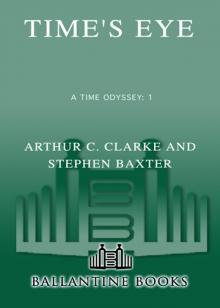 Time's Eye
Time's Eye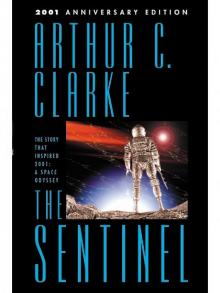 The Sentinel
The Sentinel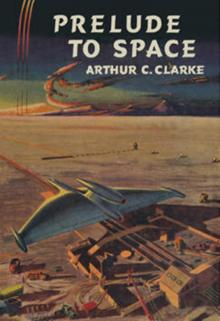 Prelude to Space
Prelude to Space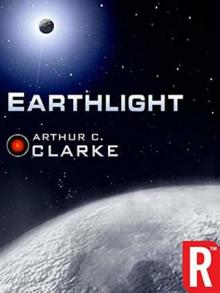 Earthlight (Arthur C. Clarke Collection)
Earthlight (Arthur C. Clarke Collection) 2001: A Space Odyssey
2001: A Space Odyssey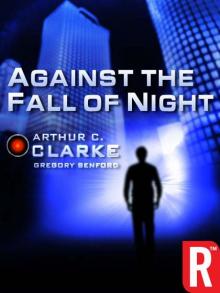 Against the Fall of Night
Against the Fall of Night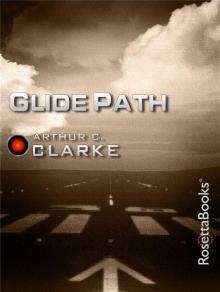 Glide Path
Glide Path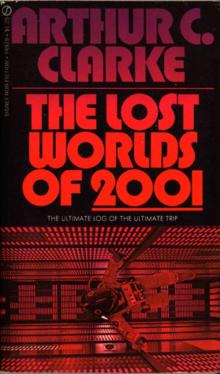 The Lost Worlds of 2001
The Lost Worlds of 2001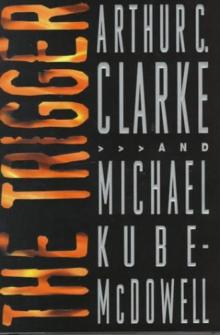 The Trigger
The Trigger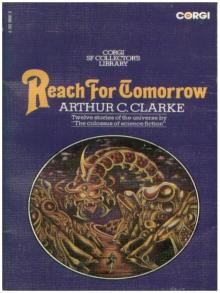 Reach for Tomorrow
Reach for Tomorrow Islands in the Sky
Islands in the Sky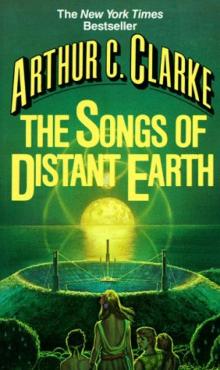 The Songs of Distant Earth
The Songs of Distant Earth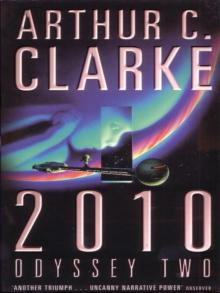 2010: Odyssey Two
2010: Odyssey Two Childhood's End
Childhood's End 3001: The Final Odyssey
3001: The Final Odyssey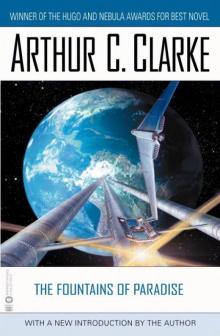 The Fountains of Paradise
The Fountains of Paradise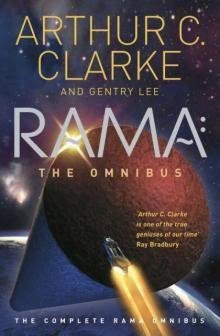 Rama: The Omnibus
Rama: The Omnibus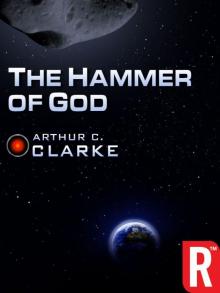 The Hammer of God
The Hammer of God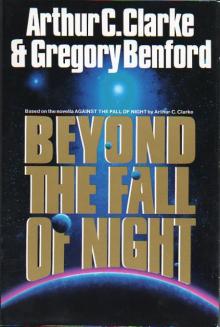 Beyond the Fall of Night
Beyond the Fall of Night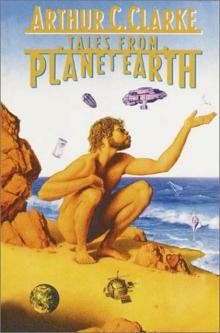 Tales From Planet Earth
Tales From Planet Earth 2061: Odyssey Three
2061: Odyssey Three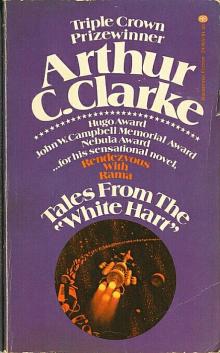 Tales From the White Hart
Tales From the White Hart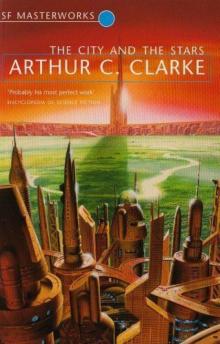 The City and the Stars/The Sands of Mars
The City and the Stars/The Sands of Mars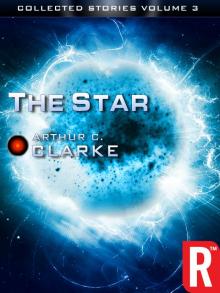 The Star
The Star Imperial Earth
Imperial Earth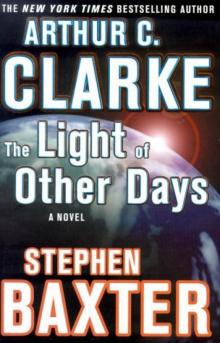 The Light of Other Days
The Light of Other Days Firstborn
Firstborn The Other Side of the Sky
The Other Side of the Sky Cradle
Cradle The Wind From the Sun
The Wind From the Sun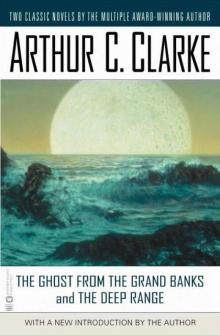 The Ghost From the Grand Banks and the Deep Range
The Ghost From the Grand Banks and the Deep Range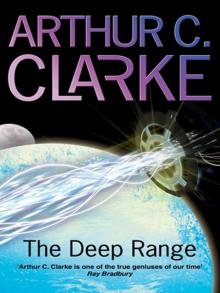 The Deep Range
The Deep Range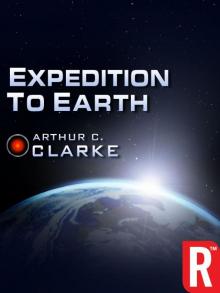 Expedition to Earth
Expedition to Earth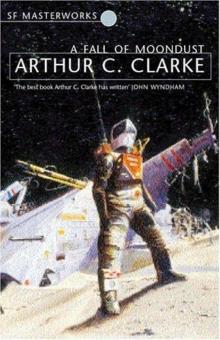 A Fall of Moondust
A Fall of Moondust Dolphin Island (Arthur C. Clarke Collection)
Dolphin Island (Arthur C. Clarke Collection)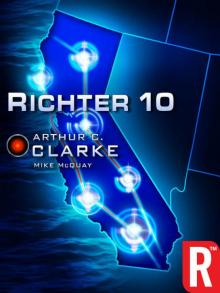 Richter 10
Richter 10 The City and the Stars
The City and the Stars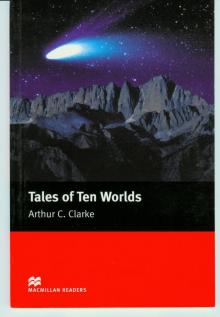 Tales of Ten Worlds
Tales of Ten Worlds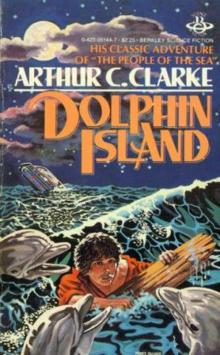 Dolphin Island
Dolphin Island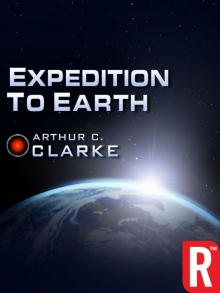 Expedition to Earth (Arthur C. Clarke Collection: Short Stories)
Expedition to Earth (Arthur C. Clarke Collection: Short Stories) Sunstorm
Sunstorm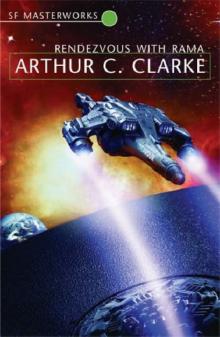 Rendezvous with Rama
Rendezvous with Rama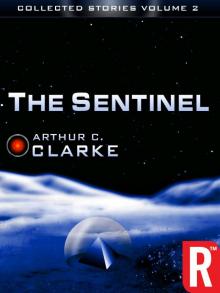 The Collected Stories of Arthur C. Clarke
The Collected Stories of Arthur C. Clarke Trouble with the Natives
Trouble with the Natives Rama Revealed r-4
Rama Revealed r-4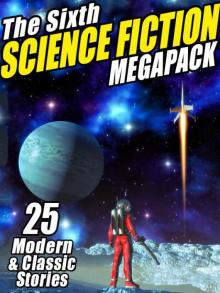 The Sixth Science Fiction Megapack
The Sixth Science Fiction Megapack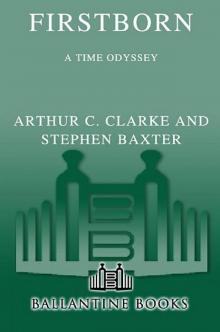 Firstborn to-3
Firstborn to-3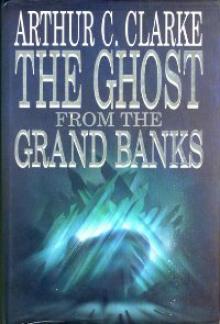 The Ghost from the Grand Banks
The Ghost from the Grand Banks Into the Comet
Into the Comet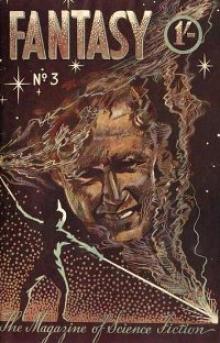 The Fires Within
The Fires Within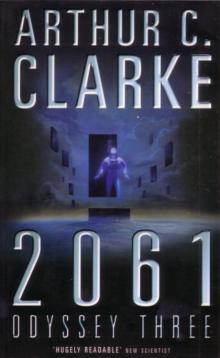 2061: Odyssey 3
2061: Odyssey 3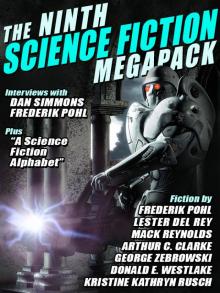 The Ninth Science Fiction Megapack
The Ninth Science Fiction Megapack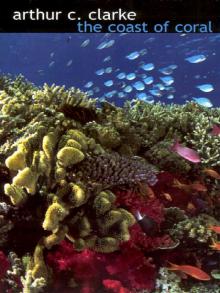 The Coast of Coral
The Coast of Coral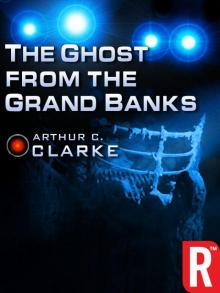 The Ghost from the Grand Banks (Arthur C. Clarke Collection)
The Ghost from the Grand Banks (Arthur C. Clarke Collection)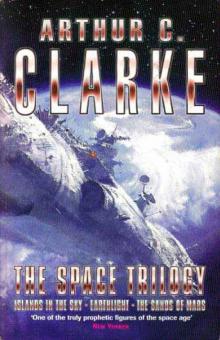 The Space Trilogy
The Space Trilogy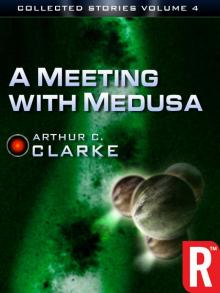 A Meeting With Medusa
A Meeting With Medusa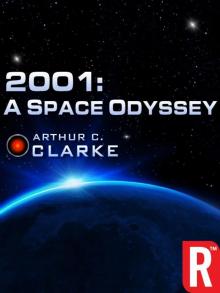 2001: A Space Odyssey (Arthur C. Clarke Collection: The Odyssey)
2001: A Space Odyssey (Arthur C. Clarke Collection: The Odyssey) Islands in the Sky (Arthur C. Clarke Collection)
Islands in the Sky (Arthur C. Clarke Collection)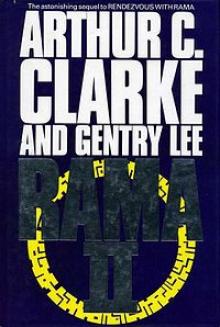 Rama II r-2
Rama II r-2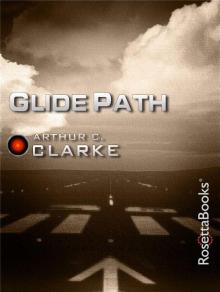 Glide Path (Arthur C. Clarke Collection)
Glide Path (Arthur C. Clarke Collection)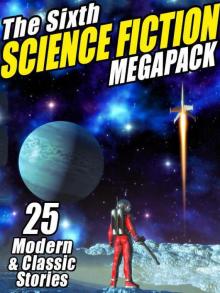 The Sixth Science Fiction Megapack: 25 Classic and Modern Science Fiction Stories
The Sixth Science Fiction Megapack: 25 Classic and Modern Science Fiction Stories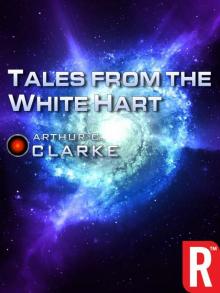 Tales from the White Hart (Arthur C. Clarke Collection: Short Stories)
Tales from the White Hart (Arthur C. Clarke Collection: Short Stories) The Reluctant Orchid
The Reluctant Orchid